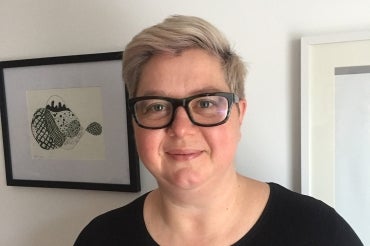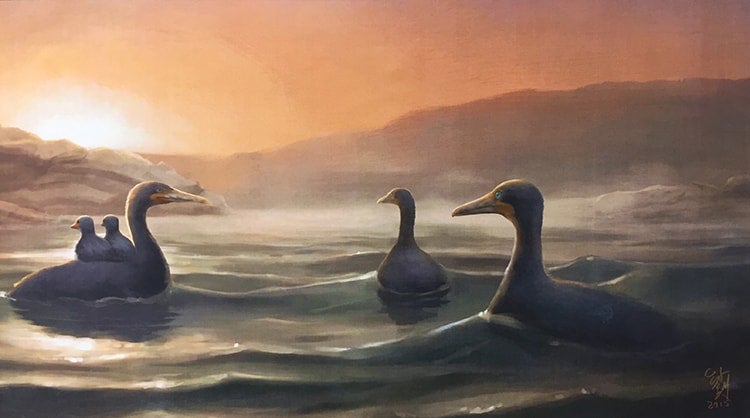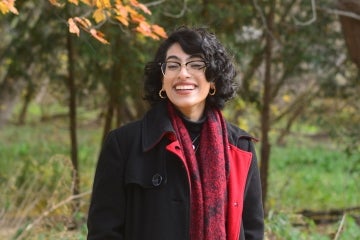Early Career Teaching Awards spotlight: Q&A with ornithologist Sanja Hinić-Frlog

Published: March 16, 2017
Although it was two decades ago, Sanja Hinić-Frlog clearly remembers the early morning walk when she first recognized a bird by its song. The songbird in question was the northern parula, a warbler with a yellow breast and orange throat that is about the length of an iPhone 5.
Hinić-Frlog’s ears have perked up at the sound of chirping ever since.
The U of T Mississauga assistant professor now teaches her own undergraduate students how to listen for birdsongs on walks along U of T Mississauga’s Nature Trail. She is one of four winners of this year's Early Career Teaching Award. She spoke with U of T News, describing her teaching habits and her all-time favourite birds.
This is the third story in a series casting a spotlight on the Early Career Teaching Award winners. This year's other winners are:
- Dawn Kilkenny, assistant professor, teaching stream in the Institute of Biomaterials & Biomedical Engineering at the Faculty of Applied Science & Engineering
- David Roberts, assistant professor, teaching stream, Innis College urban studies program, Faculty of Arts & Science
- Ashley Stirling, assistant professor, teaching stream in the Faculty of Kinesiology & Physical Education
What do you enjoy most about teaching?
The thing I love the most about teaching about birds is that once you hear the birds, you are never the same.
We hear all these urban noises around us and don't pay attention to them. I remember the moment someone pointed out a bird song to me, and I never forgot that bird song. I heard birds all the time from that moment on. It doesn't matter if you're a little kid or if you're 50, and you learn about this. It opens up a world you're not really attuned to. It helps you realize you're a part of something bigger.
The first birdsong that Hinić-Frlog learned to identify was that of the northern parula (audio courtesy of the Cornell Lab of Ornithology)
Is there a particular bird that fascinates you?
My students make fun of me because I always say “That's my favourite bird!” and then the next day I say “That's my favourite bird!”
I think I'll just stick with my fossil bird. It's called Hesperornis, and it's not around anymore. [She did her PhD dissertation on Hesperornis regalis, an aquatic and carnivorous bird that lived about 80 million years ago]. It lived in Kansas when Kansas was all covered by ocean. There's a lot of fascinating things we still don't know about these birds. And they lived in water and swam very fast. They spent most of their time in water. They’re fascinating.
Any bird that's really good at flying and moving in both air and water is interesting to me because those are two very different mediums with different mechanical and physical pressures.

An illustration of Hesperornis from student Chi-Chun Liu's master's research project in biomedical communications at U of T Mississauga (photo courtesy of Chi-Chun Liu)
How do we know they could swim?
There are certain characteristics of the toe bones that can help you decide whether or not there was webbing between the toes, which is an indication that a bird lived in close association with an aquatic environment.
How would you describe your teaching method?
I use different methods in different classes, but I always incorporate an active learning approach. Although this approach may look very different in my small and large classes, it is essentially providing an opportunity for students to learn by doing.
In my large classes, I use classroom response systems to break up the lecture and allow for in-class problem solving through content-related questions, case-studies or small discussions.
In a small classroom, like ornithology, it comes more naturally. When we're outdoors, we're learning by doing right away.
Students learn through peer discussion in active classrooms, or by looking for and learning to identify birds by sight and sound through walks on the nature trail.
How do you keep students engaged?
In addition to getting students engaged by using the active-learning approach mentioned above, I use case studies, animations, videos and common misconceptions to introduce topics in lecture.
When we are preparing for a test, I also often use popular-game structures such as Jeopardy or Pictionary to design a review session. I also like to provide students with time to reflect on their learning both inside and outside of the class and at least some choice in both the topics we cover and the assessment weights.
What do you hope students take away from your courses?
If I had to pick one thing – it's going to sound very non-academic, but I think it's important – I want them to learn something about themselves.
If they’re new to the university, many of them can feel quite lost. If I can help them figure out at least what they don't want to do, I think that's useful for them. Using the content outside the classroom to formulate arguments, that is also something that's also very useful.



